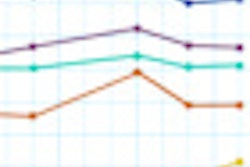Do referring physicians order fewer imaging tests if they know how much the scans cost? No, according to a new study by researchers from Johns Hopkins University that was published online in the Journal of the American College of Radiology.
The Hopkins researchers found that even if doctors know how much advanced imaging tests cost, the knowledge doesn't necessarily influence inpatient imaging use (JACR, January 2, 2013).
"Cost alone does not seem to be the determining factor in deciding to go ahead with an expensive radiographic test," study senior author Dr. Daniel Brotman said in a statement released by Johns Hopkins. "There is definitely an overordering of tests in this country, and we can make better decisions about whether our patients truly need each test we order for them. But when it comes to big-ticket tests like MRI, it appears the doctors have already decided they need to know the information, regardless of the cost of the test."
Brotman and colleagues used data from 2007 to identify the 10 most frequently ordered imaging exams, five of which were randomly assigned to a "cost display" group of physicians and five to a control group. Between November 2008 and May 2009, Brotman's team did not show doctors costs for imaging exams; a year later, they displayed costs only for tests in the active group.
At the end of the study, the group used the hospital's RIS to determine the number of orders for all tests during both periods, measuring the mean relative utilization change between the control and "cost display" periods for the active group versus the control group. The study also measured the correlation between test cost and utilization change in the active group versus the control group.
There was no significant difference between the two groups in terms of mean utilization change, the researchers found. There also was no significant difference in the correlation between test cost and utilization change for the active group versus the control group.
Even though awareness of imaging exam costs didn't influence the way physicians ordered tests, financial considerations may play a role in other circumstances if tied to clinical evidence, Brotman said: If a provider discovers that he or she is ordering four times as many CT scans as a colleague whose patients have similar outcomes, it could change the decision-making process for the better.
"Cost transparency must be part of the solution to solving fiscal challenges in medicine," Brotman said. "Providers have no idea how much they're spending. Patients don't know either. Having everyone understand more of the economics of healthcare is a great place to start cutting costs in medicine."




















